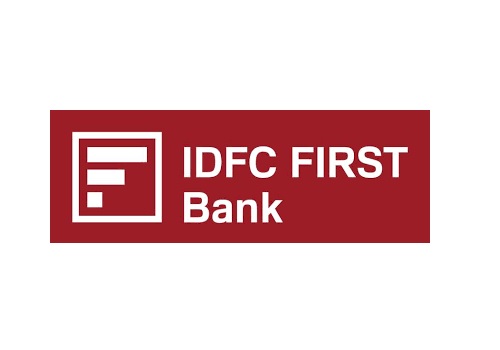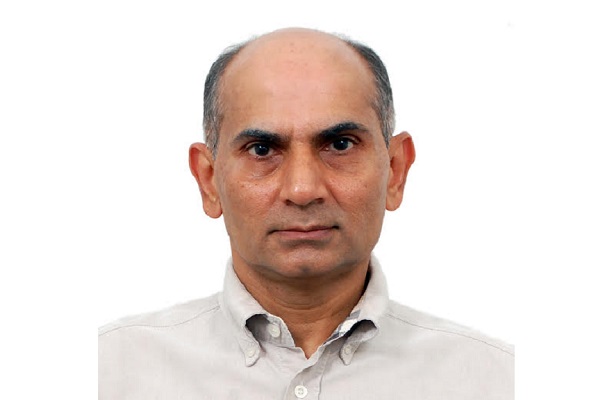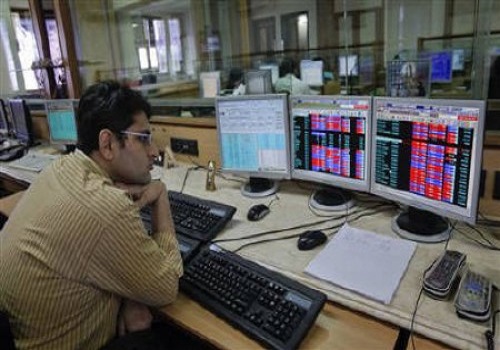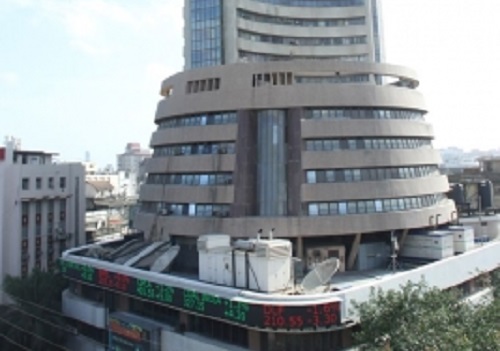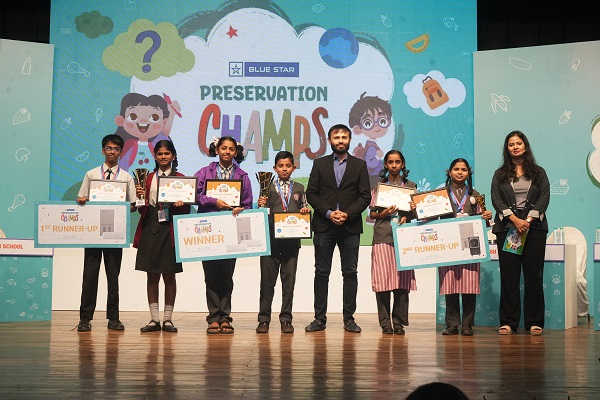Ugro Capital Unveils second edition of MSME Sampark Report, reinforcing the positive outlook on MSMES & Emphasizing `MSME Achha Hai`

UGRO Capital, a leading DataTech NBFC focused on MSME lending, in collaboration with Dun & Bradstreet announced today the release of the second edition of the MSME Sampark – a Bi-annual report on the latest in MSME Lending ecosystem. The report offers critical insights into the recovery of India's MSME sector, particularly in the aftermath of the COVID-19 pandemic, and showcases the sector’s pivotal role in India's economic growth as the country progresses toward its goal of becoming a developed economy, or ‘Viksit Bharat’, by 2047.
The comprehensive report, which examines over 39,000 MSMEs and 12,000 small businesses in the Micro sector across seven key sectors, emphasises the importance of formalisation and digitalisation in enhancing MSMEs’ access to credit and growth opportunities. Borrowings by MSMEs are increasing, largely through collateralized loans, pointing to the need for timely and affordable working capital.
Shachindra Nath, Founder and Managing Director, of UGRO Capital, said, “NBFCs have significantly bolstered MSME growth, with a 15% CAGR in AUM over the past five years. Their ability to reach underserved markets with tailored financial solutions makes them vital to the MSME lending ecosystem. UGRO Capital, leveraging its data and technology-driven platform, has already disbursed loans to over 140,000 MSMEs. The MSME Sampark Report offers a clear view of how resilient and vital MSMEs are to India's economy, reflecting the core belief – that ‘MSME Accha Hai’. With enhanced formalisation, credit access, and support from financial institutions, MSMEs are leading the way toward a stronger, more prosperous India. MSME Sampark is more than just a report; it’s a tool for policymakers, financial institutions, and industry leaders to understand the evolving MSME landscape, and our goal is to continue enabling MSMEs to grow, create jobs, and contribute to India’s economic future.”
Avinash Gupta, MD & CEO - India, Dun & Bradstreet, said, “As India's contribution to global GDP is projected to double by 2029 compared to 2019, the growth prospects and accompanying shifts in consumption patterns will require MSMEs to adapt through innovation, technology adoption, and strategic changes. To grow and innovate MSMEs would need access to credit and technology. MSMEs contribute around 30% to India's GDP, but their share in non-food credit remains relatively low at around 6.0% in FY24. Government initiatives aimed at digitalisation and incorporating MSMEs' digital footprints into credit decisions are expected to further enhance their access to credit, technology, and markets. In this context, the in-depth study of a large sample of MSMEs across India provides unique insights to various stakeholders in the MSME ecosystem to monitor their growth and credit performance. Our study reveals that MSMEs continue to recover post-pandemic, with over 50% of the studied sample recording more than 10% year-over-year growth in sales from May 2021 to March 2024.”
The sectors studied in this report are Light Engineering, Food Processing, Electrical Equipment, Chemicals, Auto Components, Hospitality and Healthcare.
Women Entrepreneurs: MSME registration on UDYAM signals rapid formalisation of small businesses, including women entrepreneurs. Women MSMEs account for 20% of total MSMEs registered on UDYAM. This share increases when Informal Micro Enterprises (IMEs) are considered. As of January 2024, women-owned IMEs account for more than 71% of the total IMEs, contributing to more than 71% of employment since the portal's inception in January 2023.
The registration of women-led MSMEs on the UDYAM portal is doubling annually, despite their small share of the overall MSMEs on UDYAM. Currently, one in five UDYAM-registered MSMEs is led by women, and these businesses contribute to one in five jobs created by MSMEs, even with lower investment and turnover. Women-led MSMEs are generally smaller than their counterparts, accounting for only Re 1 in Rs 10 of investment and turnover.
Key Highlights of the Report
* Unlocking the potential of MSMEs is crucial for India to achieve its goal of becoming a Viksit Bharat (a developed economy) by 2047. To enhance the GDP contribution of MSMEs, it is essential to focus on the formalisation of small businesses and their growth in size and scale.
* The number of MSMEs registering on the UDYAM portal has nearly doubled each year since it was launched in FY21, reflecting the rapid formalization of small businesses. This formalization improves their access to various government policy initiatives, such as financial support, subsidies, and market access.
* The initiatives taken by the government in the Union Budget towards technology adoption and digitalisation will aid in the formalisation of MSMEs and enhance their access to credit and markets.
* A sample of 39,000+ MSMEs spread over India in 7 selected sectors were studied over a 3+ year timeframe to understand their recovery post-pandemic and penetration of credit. The sectors are Light Engineering, Food Processing, Electrical Equipment, Chemicals, Auto Components, Hospitality, and Healthcare.
* The study reveals MSMEs continue to recover post-pandemic, with over 50% of the studied sample recording more than 10% year-over-year growth in sales from May 2021 to March 2024.
* Growth in sanctions of new loans and improved access to working capital is observed across the studied sample of MSMEs. The proportion of working capital loans to total secured debt (working capital and long-term secured loans) increased from 66% in Q1 2023 to 71% in Q4 2023.
* The debt-to-turnover ratio of MSMEs has improved in the 7 sectors for the quarter ending March 2024 compared to the quarter ending September 2023. This improvement is evident in firms with a turnover of less than Rs 5 crore in the Light Engineering, Food Processing, Hospitality, and Healthcare sectors. This varies across the other three sectors, i.e. Electrical Equipment (Rs 10-20 crore turnover), Chemicals (Rs 5-10 crore turnover), and Auto Components (Rs 10-20 crore turnover).
* Average new debt has also improved across different sizes of firms, with those having more than Rs 20 crore turnover witnessing the most increase across all seven sectors.
* The increase in the share of regular term loans from 57% in 2020 to 88% in 2023, along with the rise in the proportion of larger ticket loans (> Rs 10 lakhs) from 19% in 2020 to 40% in 2023 for micro enterprises, reflects lenders' confidence in the resilience and potential of these firms.
Highlights of the sectors covered in the report:
* Light Engineering: In the MSMEs in this sector, revenue increased by 16% in FY23, compared to 29% in FY22 (from a low base), driven by domestic demand from industries, such as automobile, infrastructure, consumer durables, defense, and railways. The net working capital cycle reached the pre-pandemic levels of 73 days, signaling the normalisation of the trend. The report also says that investment in this sector is driven by higher demand from manufacturing sectors towards automation, robotics, and high-precision and high-efficiency tools. Semi-finished and finished metal works are the dominant sub-industries with the highest market size and the most efficient sub-sector in terms of debt to total turnover. The sector footprint is visible across India, with Maharashtra being the dominant market and subsector hubs such as Gujarat for plastic/ glass/ ceramic products.
* Food Processing: MSMEs in this sector have shown double-digit revenue growth over the past two post-pandemic years on robust external demand, an increased share of processed foods in Indian household consumption, and government support for MSMEs in food processing. Processed food exports as a share of agricultural exports increased from 13.7% in FY14 to 25.6% in FY23, even as their share in total household consumption expenditure nearly doubled from FY05 to FY23. The food processing sector has drawn greater investments to develop modern infrastructure throughout the value chain from farm to market.
* Oil seeds/oil, fruits and vegetables, bakery, and cereals are the dominant sub-sectors. Compared to other sectors, the cash proportion is the highest in the food processing industry. While the sector footprint is seen across India, the dominant markets are Maharashtra, Gujarat, and Rajasthan.
* Electrical Machinery: Post-pandemic, revenue grew by over 20% for MSMEs in this sector for two consecutive years till FY23, likely driven by higher external demand (CAGR of exports increased by 3x over FY14-23) and an increase in domestic demand from sectors like railways, defense, power, etc. The long-term investment by MSMEs, though lower than in pre-pandemic years, has remained high and consistent. The dominant sectors are electronic equipment, electrical appliances, electronic machines, and electrical circuit components. Overall sector footprint is seen across India, with Maharashtra being the dominant market and subsector hubs are in Gujarat and New Delhi.
* Chemical Industry: Investment in this sector is driven by increasing domestic demand from the automotive, textiles, construction, water treatment, and plastics industries, besides opportunities arising from the China+1 strategy. The sector comprises entities dealing with inorganic and organic chemical substances, as well as varied chemical products; inorganic and organic chemicals, insecticides/ fungicides/ washing agents, and fertilizers. Prominent other subsectors are plastic and rubber products, minerals and constructional goods, and coloring matters. Maharashtra is the dominant market, with Gujarat and Karnataka being the subsector hubs.
* Auto components: The government’s introduction of two new schemes -- the Electric Mobility Promotion Scheme (EMPS) 2024 and the Scheme for Manufacturing of Electric Passenger Cars (SMEC) -- along with increased allocation to the PLI schemes, aims to accelerate the adoption of electric two-wheelers (e-2Ws) and electric three-wheelers (e-3Ws) and develop the electric vehicle (EV) manufacturing ecosystem in the country. Motor vehicles and auto parts, such as transmission parts, body, and chassis constitute 75% of the sector. Maharashtra is the dominant market, while Gujarat and Karnataka are the subsector hubs.
* Hospitality: Government initiatives aimed at developing tourism and related infrastructure will benefit small businesses within the sector, which heavily rely on public infrastructure and local government support for growth. FY23 showed robust revenue growth, up 83% year-over-year, driven by increased domestic leisure travel and foreign tourist arrivals. Personnel services, transport and logistics, travel rental, and hotel/ tourism/ dining constitute a large part of the sector with the highest debt-to-turnover ratio in the hotel/ tourism and F&B industry. Here too Maharashtra is the dominant market. Gujarat, Karnataka, and Tamil Nadu are the subsector hubs.
* Healthcare: The increased allocation to Ayushman Bharat should lend support to MSMEs as it promotes MSME-owned hospitals. Also, investments by MSMEs continue to rise, supported by the government’s 'Atmanirbhar Bharat' and the PLI schemes. Healthcare delivery and service (dealers, distributors, hospitals, diagnostic centers) constitute a major share of the market. Maharashtra is the dominant market, while Gujarat, Rajasthan, and Telangana are the subsector hubs.
* Methodology of the Report: The report leverages various public and Dun & Bradstreet’s data cloud to analyse the overall MSME segment’s health and credit requirements. Detailed financial analysis of sample MSME firms in seven sectors is undertaken to understand the risk dynamics. The report includes insights derived from a niche study of 39,000+ MSMEs financial and repayment performance over a 3+ year timeframe. These MSMEs have a turnover of less than 100 crores and operate in UGRO-focused sectors.
Above views are of the author and not of the website kindly read disclaimer
